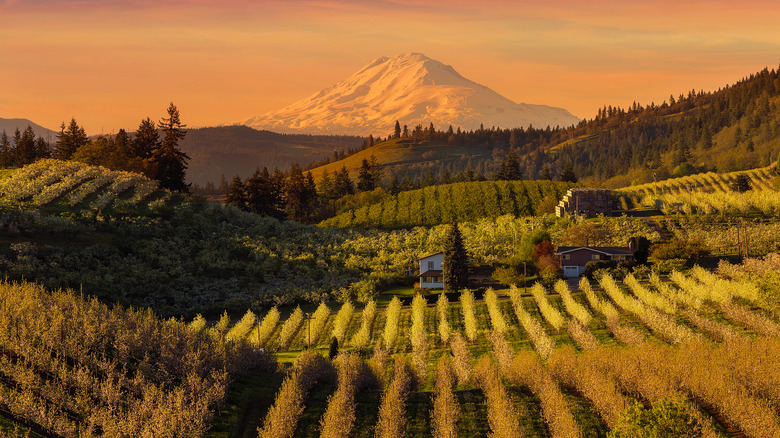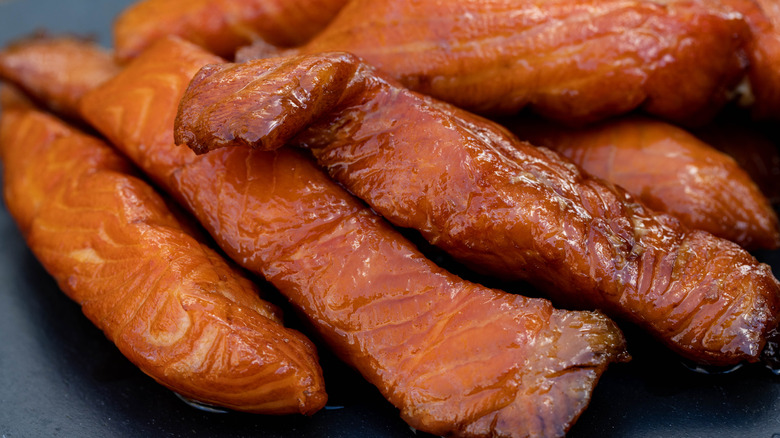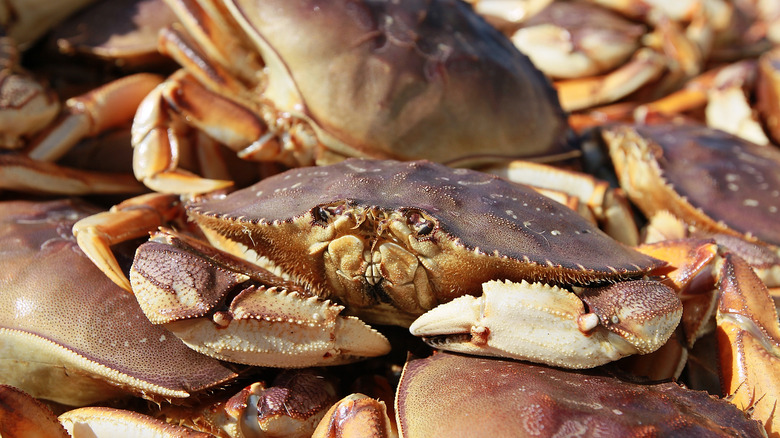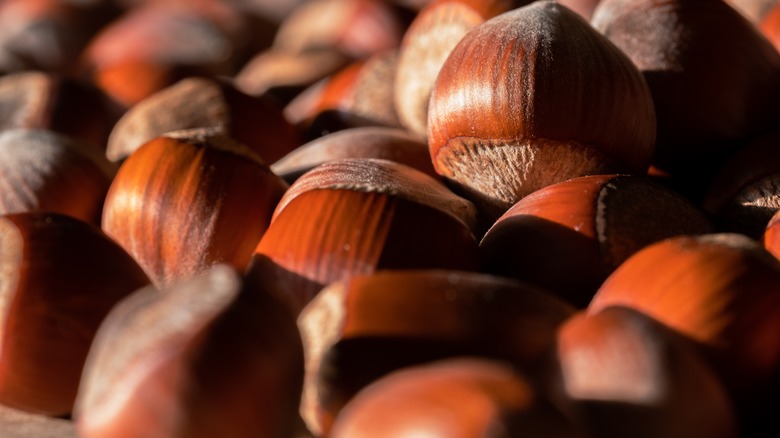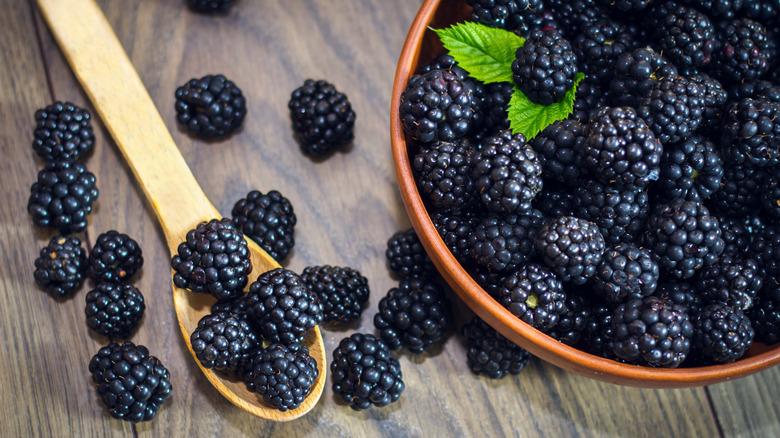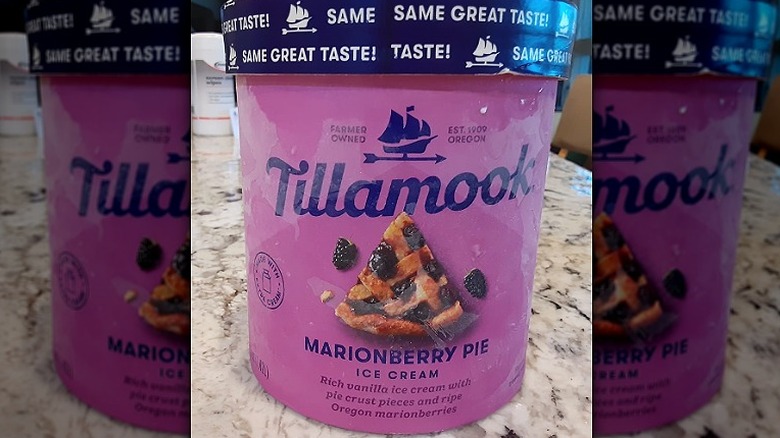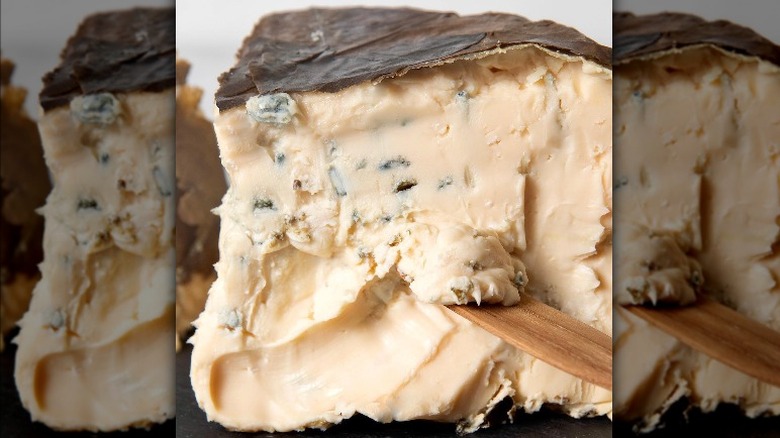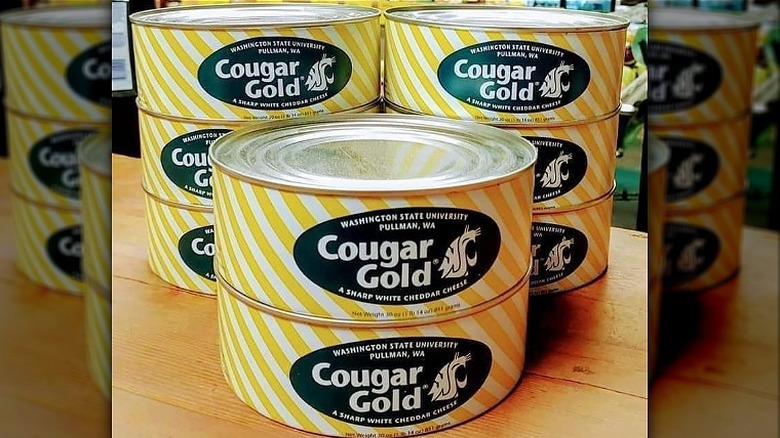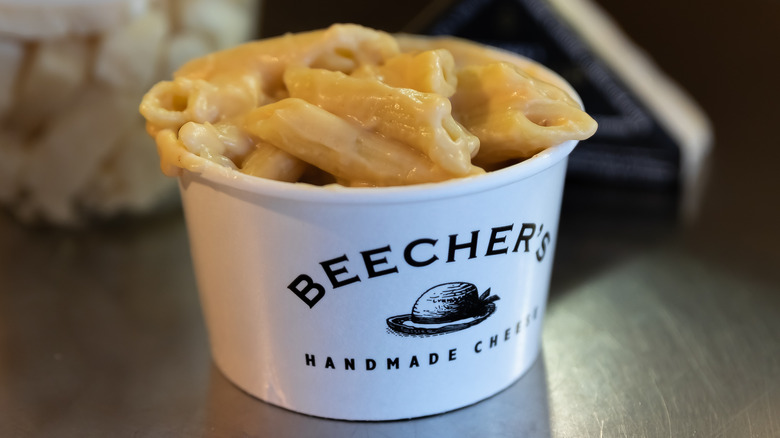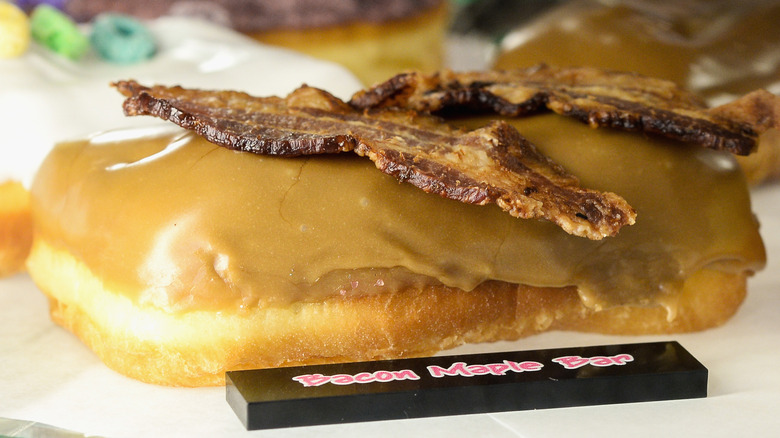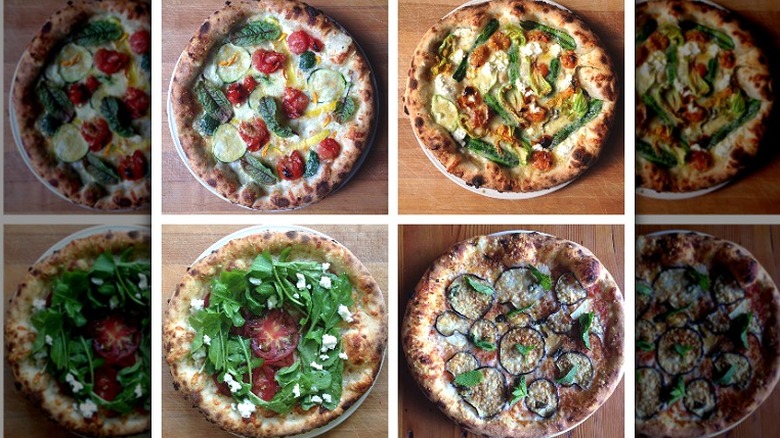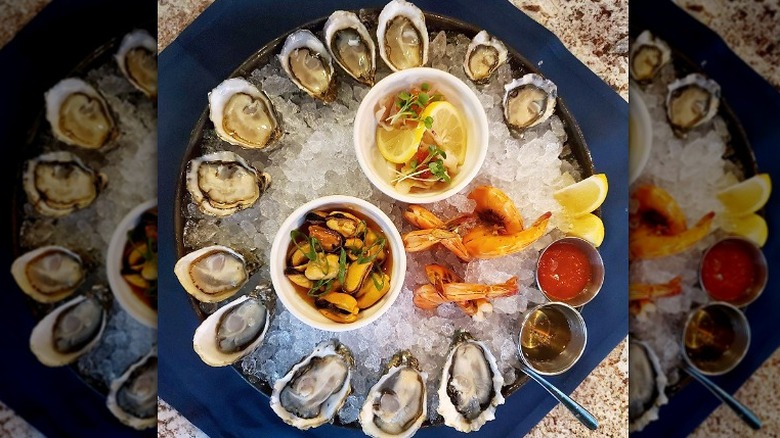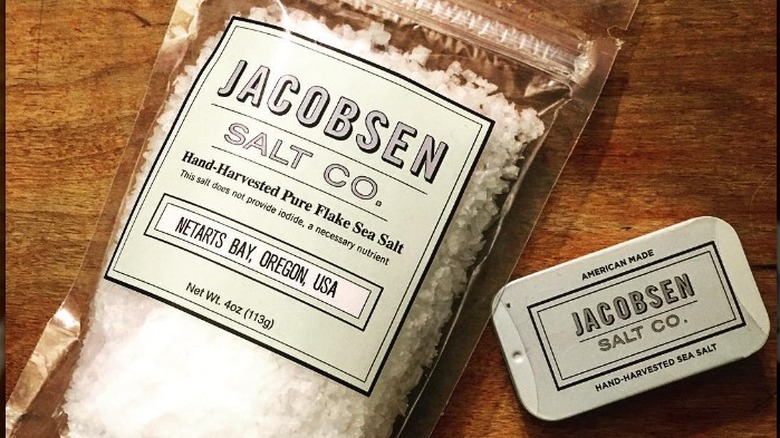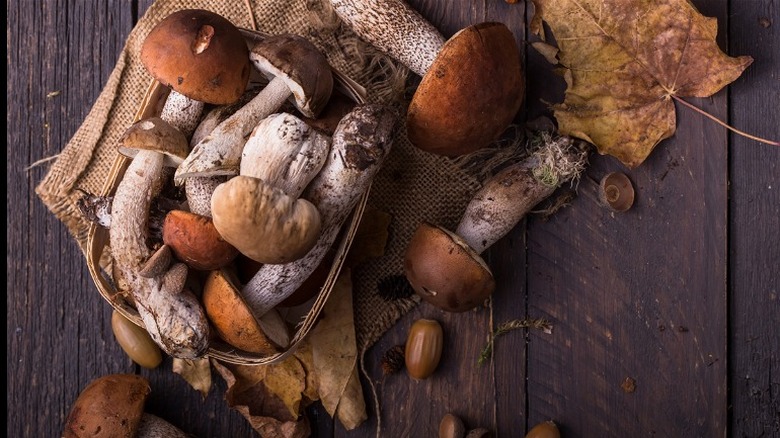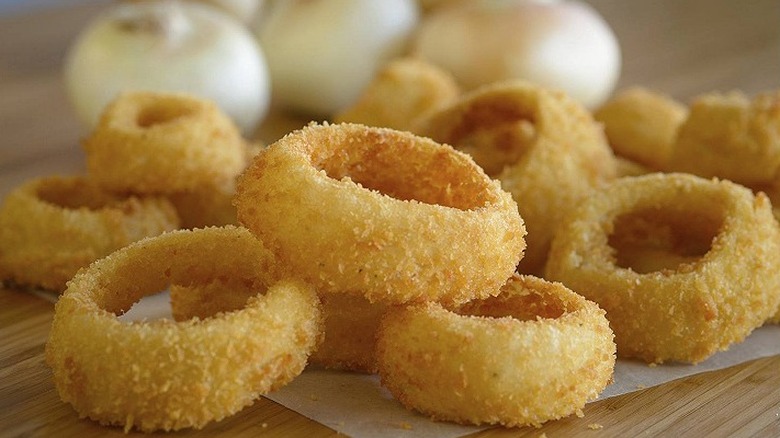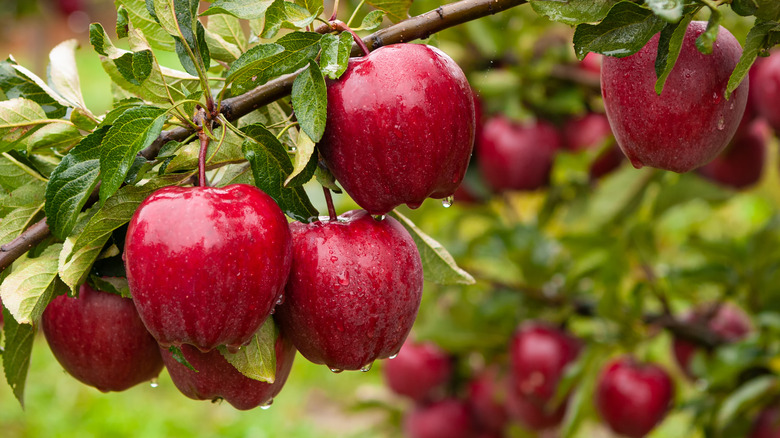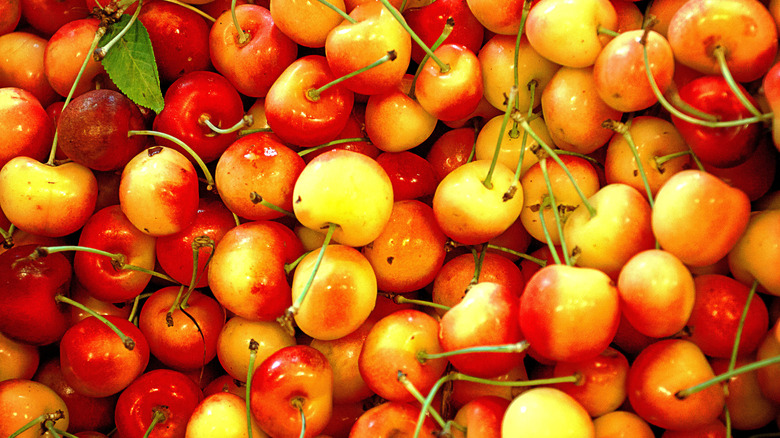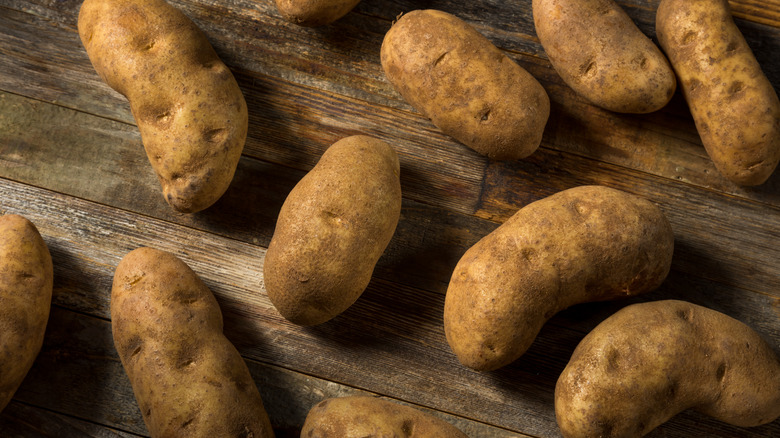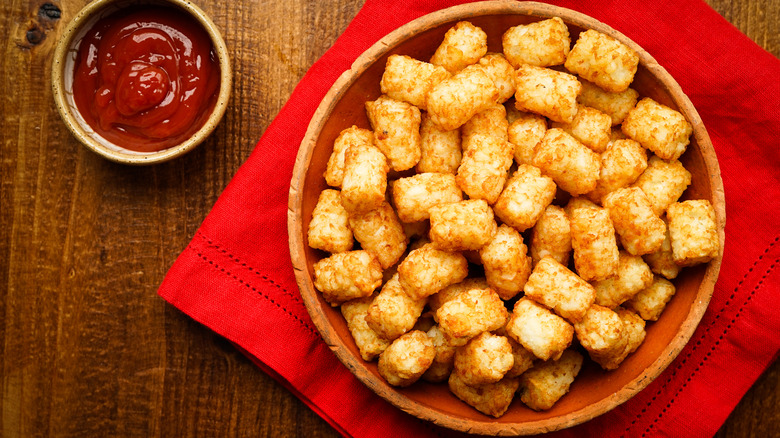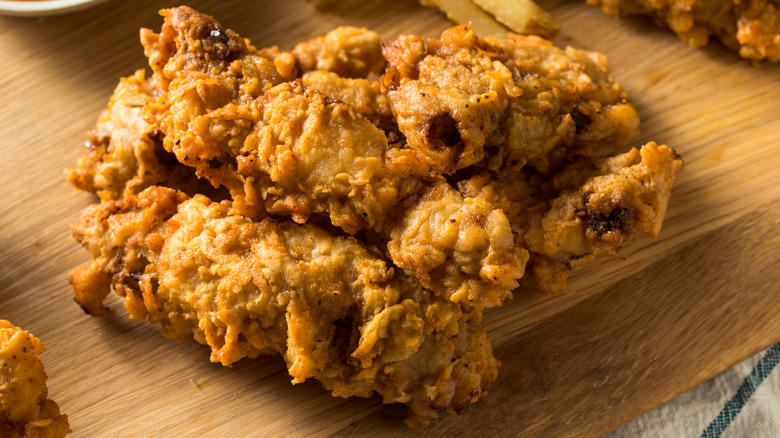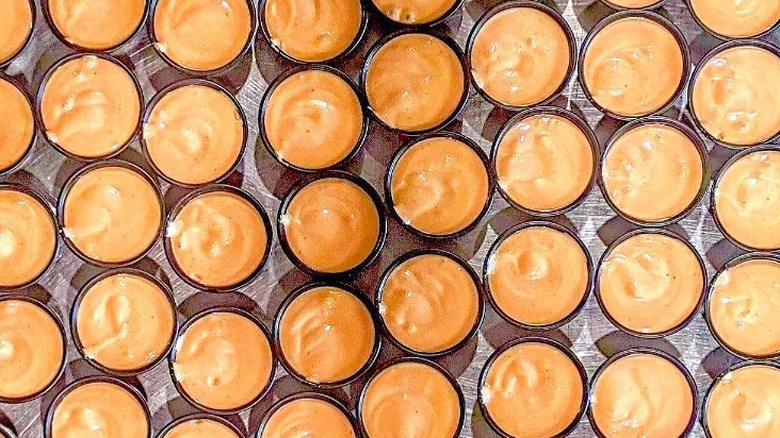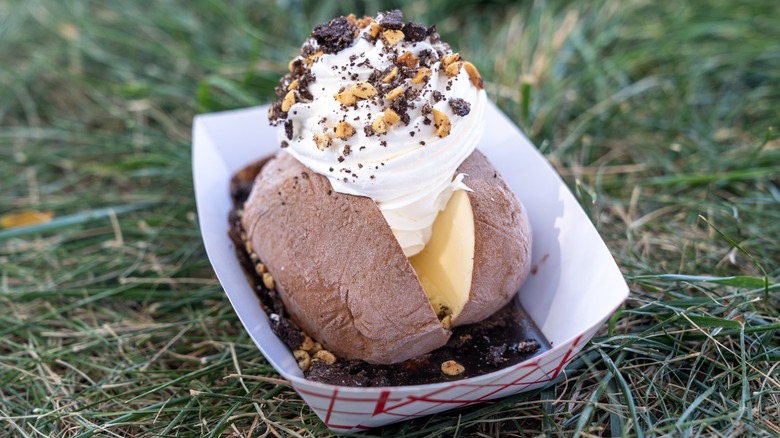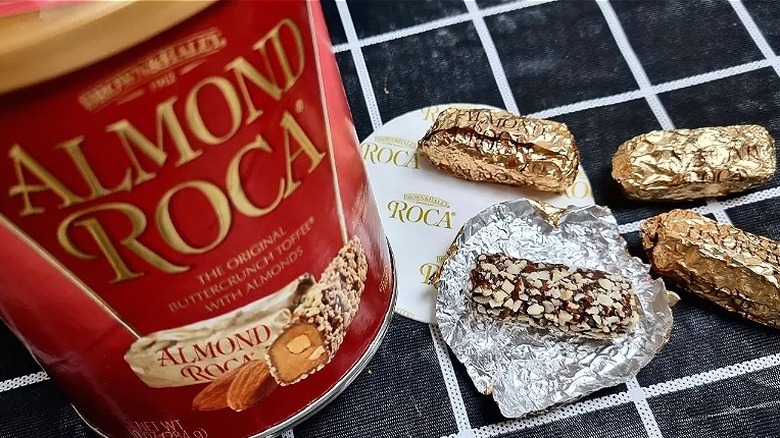22 Foods You Need To Try In The Pacific Northwest
From Southern Oregon to the border of Canada, and the islands and inlets of the Pacific Ocean to the arid potato fields of Idaho, the Pacific Northwest delivers a distinct array of microclimates unlike any experienced elsewhere in the country. With such diversity, the place provides exceptional foods and flavors unique to the region that have become delicacies throughout the country. These include well-known options like salmon and shellfish, mushrooms, and berries, but that is just the start.
We have taste-tested our way around Oregon, Washington, and Idaho and have found the absolute best foodie favorites from each state to add to your must-try list. Some options are seasonal and only available for short windows during the summer or fall. Others are found year-round, appearing on store shelves nationwide or offered for delivery directly from the purveyor.
Either way, all display the gifts Mother Nature has bestowed on the nature-loving region filled with breathtaking beauty, revealing a flavor that tells the story of the land.
1. Salmon candy
Salmon is as much a part of the Pacific Northwest as the people who live in the region. An indigenous tribe's first food, Pacific salmon, has been a staple of the Northwest since well before our country's founding (via Travel Oregon). And for a good reason, Healthline reports salmon is high in protein, healthy omega-3 fatty acids, and an extensive list of vitamins and minerals.
And Pacific Northwest salmon is, by far, the best in the world. Oregon Encyclopedia reports Oregon has six species of Pacific salmon, each with a unique flavor profile, including Chinook (or king), coho, sockeye, chum, pink, and steelhead. Sockeye is widely considered the most flavorful type of salmon due to its robust fishy taste.
Suppose you prefer a slightly sweeter, salty, smoky salmon. In that case, the Pacific Northwest delivers a unique flavor combination with its salmon candy. It is a similar concept to candied bacon or teriyaki beef jerky. Oregon's South Beach Fish Market explains its candied bacon starts with king salmon. The fish is teriyaki brined before slow smoking over hickory, brushed with pepper, and finally glazed with a thick layer of brown sugar. The combination brings a desirable sweet-savory-salty flavor to the protein-packed fish. The treat is hard to find outside the Northwest, but lucky for us, purveyors like South Beach Fish Market and Seattle's famous Pike Place Fish Market ship nationwide.
2. Dungeness crab
Rich, sweet, and meaty, Dungeness crab is a welcome treat for any seafood lover's table and a native crustacean of the Pacific Northwest. The Dungeness name comes from a small Washington fishing village called Dungeness Spit (via Fathom Seafood).
The Seattle Times reports this year's Dungeness crab season in Washington began with great enthusiasm, with crabbers bringing in over 4.5 million pounds of the shellfish within December. This haul was great news for Washington's crabbing community and a welcome change from previous years, as acidification of the ocean has resulted in lean crab harvests and a late start to the last seasons. The newspaper adds the crustacean is enjoying improved ocean conditions, with cold water from the north bringing nutrients to its marine habitat, which crabbers are thankful for as the price for a pound of Puget Sound Dungeness crab is at an all-time high (via the WDFW annual 2019-2021 crab report).
The Oregon Crab Commission reports the meat-to-shell ratio in a Dungeness crab is about 25%. Or a two to three pounds crab delivers half to three-quarters of a pound of picked, ready-to-eat sweet and savory meat. Just enough to make the best gazpacho soup.
3. Hazelnuts
The hazelnut may be the miracle nut. According to the Oregon Hazelnut Industry, it is said to cure a common cold and chronic cough. It is also one of five sacred nourishments God bestowed on humans. Also known as a filbert, Oregon's official state nut is almost 100% of the total commercial U.S. hazelnut industry.
A few years ago, an Oregon State University study found that 99% of the hazelnuts grown commercially in America came from Oregon, with the remaining one percent coming from their northern neighbor. The study adds that mature trees can grow up to 40 feet and live up to 50 years, which is great news for Oregon farmers, as mature orchards can produce up to 4,000 pounds of hazelnuts per acre.
Hazelnuts are protein-packed bites of cholesterol-free flavor. WebMD reports that marble-sized nuts contain vitamins, minerals, and heart-healthy omega-3 fatty acids. Oregonians enjoy them whole after removing the shell and simply roasting or crushed and tossed into salads or wilted greens. Hazelnuts are such a great snack, even enjoyed raw by freshly cracking them from their shell.
But if you are a peanut or almond butter fan, we highly recommend giving hazelnut butter a try. There is a natural sweetness roasted hazelnuts reveal, melding with their bold, earthy flavor, especially when compared to peanut butter, reports Plant Based Faqs. Ground roasted hazelnuts become a dreamy, creamy spread elevating your morning slice of toast.
4. Oregon berries
Some states have wildflowers that grow unabandoned in fields and along highways; Oregon has berries. The Oregon Raspberry & Blackberry Commission shares that wild berries thrive in the nutrient-rich soils of Oregon's Willamette Valley, an area with cool nights, warm days, and water sourced from melted snow off the Cascade Mountains. Though the state grows a wide assortment of berries, from black raspberries, Loganberries, and boysenberries, the trailing blackberry is entirely native to the state.
And they are found everywhere. Portland State University shares that the low trailing shrub is at home growing in open areas or dense forests, fire scars, and under transmission lines.
The plethora of Oregon berries don't just grow in the wild. 90% of US-grown, cultivated, frozen blackberries sold in America are Oregonian. Whether you enjoy them fresh or frozen, the sweet, juicy fruit is rich in essential health benefits. Healthline.com reports that berries have antioxidants, vitamins, and fiber. Raspberries contain over six grams of fiber per cup; blackberries have over five, aiding digestion and weight management.
Though delicious from the vine to the table, ripe sweet and tart berries are the perfect fruit for baking. Food and Nutrition Magazine shares that cooking fruit removes water content, intensifying and concentrating the flavor. We love them in our 3-ingredient berry cobbler.
5. Tillamook Marionberry Pie Ice Cream
As beloved as the native blackberries are in the Pacific Northwest, they are nothing compared to the marionberry. This should be Oregon's official food, and NPR reports that marionberry is an Oregon obsession.
In the 1950s, Oregon State University developed the sweet, tart fruit tasting like a mix of blackberry and raspberry, NPR adds. And sadly, most people outside of Oregon never have the chance to try the sweet fruit as it is too soft and delicate to ship fresh. Oregonians likely wouldn't allow it anyway, as state-wide fans want to keep the tasty summertime treat for themselves.
Thankfully, Oregon's award-winning Tillamook Creamery comes to the rescue with its Marionberry Pie ice cream. The dairy cooperative is likely best known for cheese, including its gold-medal winning Hickory Smoked, Extra Sharp Cheddar Cheese (via P.R. Newswire). Still, the 110-year-old company also produces creamy, dreamy ice cream featuring Pacific Northwest flavors like huckleberry and marionberry.
Its Marionberry Pie Ice Cream combines vanilla ice cream with fresh Oregon marionberries and buttery pie crust. We highly recommend blending it into a marionberry pie shake with crumbled crust.
6. Rogue River blue cheese
Pungently aromatic, mold-filled blue cheese is one of the most sumptuous delicacies produced in the world. Blue cheese has a beautiful salty, sharp, robust taste we crave. One of the finest selections comes from a tiny town in southern Oregon, Rogue River Blue Cheese from Rogue Creamery in Central Point.
The award-winning blue cheese was named best in the world and the Grand Champion Best Cheese in the world at the 2019 World Cheese Awards in Bergamo, Italy (via P.R. Newswire). The Medford Mail Tribune adds the top cheese added two more honors to its roster last year, winning Best Organic Cheese outside of the U.K. and Best U.S.A. Blue Cheese by the International Cheese and Dairy Awards.
And it is no surprise why; Rogue River Blue is divine. The cheese is produced from cow's milk from the creamery's organic dairy farm in Grant's Pass, Oregon, and only during autumn when the milk is sweetest. The seasonal cheese is then aged nine months in the creamery's caves to develop its sweet-salty flavor. Afterward, each wheel is hand-wrapped in Southern Oregon-grown syrah grape leaves soaked in pear liqueur.
When we tried the cheese, we found it to have an intense flavor with an earthy, truffle-like funkiness that marries with a subtle fruit-filled sweetness. It is a unique flavor, unlike any other blue cheese. The texture is melt-in-your-mouth creamy with an almost fudgy consistency. The cheese is expensive, about $80 a pound, but worth every penny.
7. Cougar Gold cheddar cheese
Preserved and canned foods are essential items in household pantries. Fruits and vegetables, meats, soups, and sauces line the aisle of grocery stores across America.
One thing that is often not sold in a can is cheese. However, Washington State University has changed that perception for almost 80 years with its famous Cougar Gold cheddar cheese. The school shares that in the 1940s, the working creamery inside the University received funding from the U.S. government and American Can company to prove that canning cheese was the best option for preservation. The flavor was so delicious that it became the school creamery's signature cheese.
Today W.S.U. students run the creamery under staff supervision, producing a variety of flavors, including dill and garlic cheddar, smoked cheddar, and sweet basil. Still, the original Cougar Gold is the consistent favorite.
W.S.U. adds that the cheese needs to be refrigerated, and the 30-ounce tin cans will last unopened in your refrigerator indefinitely. The longer the cheese ages, the more crystals of amino acid tyrosine develop in the cheese. These crystals add a crunchy texture to the salty, savory, crumbly cheese, a characteristic we love in well-aged cheese and our bacon-cheddar biscuits.
8. Beecher's World's Best Mac and Cheese
The region that makes so much cheese should produce the "World's Best" mac and cheese. In 2003 lifelong cheese lover Kurt Beecher Dammeier opened Beecher's Handmade Cheese in Seattle's Pike Place Market. He began making cheese from Washington-grown, humanely treated Holstein and Jersey cows. Working with local cow farmers, Beecher's ensures all the milk comes from cows fed without added recombinant bovine growth hormones (rBST).
Since its introduction, Beecher's Flagship cheese has won several prestigious awards, including 2nd place for Aged Cheddars at the 2022 American Cheese Society awards. A semi-hard cow's milk cheese aged 15 months, Beecher's Flagship has a complex, nutty flavor and crumbly texture.
From the company's start, macaroni and cheese crafted with the award-winning cheese was a part of Beecher's menu. Today the dish has been touted as the "World's Best" over the years, and after tasting it, we have to agree. The official recipe uses penne pasta, which gives great texture to the cheesy side dish and contains two and a half cups of cheese, making it extra creamy. A touch of chili and garlic powder gives it a slightly smoky, spicy, umami note we crave.
What's even better than making it yourself is you can now find it in the frozen food section of grocery stores across the country, making the future of food delivery look very bright.
9. Voodoo Doughnut Bacon Maple Bar
In 2003 two friends opened the first location of Voodoo Doughnut in Old Town Portland, transforming the breakfast treat into a whimsical institution within the city. Only in Your State describes the pink paradise as Willy Wonka meets Portland, filled with flavor-packed wonder.
When the duo began almost 20 years ago, downtown Portland lacked a single doughnut shop. Today, 13 locations are dotted across Oregon, Texas, Colorado, California, and Florida, with more on the way.
The thing that has set Voodoo apart from other American doughnut shops is its ability to push the envelope. The company lives by the city motto, "Keep Portland Weird." Portland is a city that supports those that think and work outside the box, which Voodoo does. The unique culture and willingness to accept all walks of life make Portland unique (via Living in Portland, Oregon).
Constantly evolving and inventing, its unique flavor combinations are what set Voodoo apart from all others. Doughnut creation often begins as crazy ideas that quickly become staple doughnut shop delicacies found across the country, including the bacon maple bar.
Though bacon finds its way into an assortment of dishes today, at the time of its creation, no one in the country had married the two flavors into a doughnut. Maple syrup will elevate the flavor of bacon, creating the perfect sweet and salty combination. Oregon's Rouge Brewery even raised a glass to the shop, making a smoky, sweet bacon maple ale in honor of the doughnut.
10. Lovely's Fifty Fifty seasonal pizza
Just when we thought Voodoo Doughnuts was turning the world of fried dough on its head, Chef Sarah Minnick changed how Porlandians perceived pizza by opening Lovely's Fifty Fifty in 2010.
The final episode of this season's "Chef's Table: Pizza" on Netflix showcases Minnick, and her passion-filled pies, revealing pizzas filled with farmers market fresh produce. In the episode, Minnick shares that once you stop thinking of pizza as the heavily sauced slice you buy in a traditional pizza shop, you'll appreciate her pies.
Simplistic by design, Lovely's pizzas are vehicles for showcasing seasonal produce, revealing a rustic authenticity of flavor. Minnick believes seasonal eating is so important because it tastes better, fresher, and is better for the environment. Portland Monthly describes the pies as enchanting and complex with a touch of madness, as the constantly rotating menu combinations are unlike anything you have likely ever seen on a pizza.
The menu changes daily, inspired by the season and what is available from Lovley's farm purveyors; every pizza includes Lovely's chewy, tangy, wood-fired crust made from a sourdough starter named Jake, the publication adds. From there, the options are endless, including the most unusual food Chef's Table: Pizza's Sarah Minnick ever served, wildflowers.
11. Taylor Shellfish Farm's Salish Sampler
Shellfish is a significant business in the Pacific Northwest. Washington State's shellfish aquaculture contributes $270 million to the annual economy and 2,700 local jobs (via The Nature Conservancy).
From geoduck, manila, and razor clams, to mussels, shrimp, scallops, and a plethora of oysters, the Northwest delivers an abundance of options for shellfish lovers. Seattle-based family-owned Taylor's Shellfish Farms is one of Washington's best.
The Taylors have been shellfish farmers since the late 1800s. Today the fifth generation of the family farm their sustainably raised bivalves in Washington's Puget Sound, selling their shellfish to local restaurants, farmer's markets, and Seattle-based Taylor's Shellfish Oyster Bars, named the "best of the best" by Seattle Magazine in 2018.
Taylor's Salish Sampler features a chilled display of the bounty the waters of the Pacific Northwest provide, including oysters, crab, prawns, sliced geoduck sashimi, mussels, manilla clams, and fresh salmon tartare. Each ingredient captures the salty-sweet flavor of the sea with a briny appeal that pairs perfectly with our sake cocktail.
12. Jacobsen flaked sea salt
In 2011 Oregon's Jacobsen Salt Co. became the first producer to harvest salt from the Pacific Ocean in the region since the 1800s. Gathered on the Oregon Coast in Netarts Bay, every flake of salt is crafted from Pacific Ocean water that has been cleaned, cooked, dried, and dehydrated to become perfect crystals of flavor.
The company produces a dozen flavored salt options from this base and sells them in an assortment of sizes, from on-the-go pocket-sized tins to ensure you are never without a salty pinch to five-pound bags.
The classic flaked finishing sea salt is our favorite, holding a permanent place in our spice drawer. With a crunchy texture and saline-infused briny flavor, the salt is a delicious addition to not only savory but also sweet treats. We add a bit to olive oil and ice cream, creating a salted caramel-like vanilla-rich flavor explosion.
13. Roasted wild mushrooms
Oregon is a wild mushroom foragers' playground. Travel Oregon shares areas around the Oregon Coast, Cascade Mountains, and Willamette Valley are perfect locations to find edible fungi. The sites are ideal thanks to the rainy, damp climate and heavily wooded forests. Mushrooms thrive on the forest floor under the shade of these trees, which provide a mushroom breeding ground.
iNaturalist delivers a comprehensive guide to the options found in the temperate rainforests of the Pacific Northwest, including earthy chanterelles, morels, porcini, trumpet, oysters, and so much more.
Healthline.com reports mushrooms pack loads of antioxidants, vitamins, and minerals into each low-calorie, high-fiber morsel, delivering a boatload of health benefits in each tasty bite. Mushrooms have a natural woody, earthy, umami flavor and porous nature, allowing them to soak up the flavor dishes they accompany. We love them roasted with olive oil, salt, and pepper or as the star ingredient in our Vegan Mushroom Stroganoff.
14. Walla Walla sweet onion rings
According to the Washington State Department of Natural Resources, Washington State has seven distinct physiographic areas. Pacific-influenced western Washington enjoys moderate temperatures and high levels of rainfall annually. In contrast, far eastern Washington, on the other side of the Cascade Mountains, has an arid, almost desert-like climate.
The site adds that the area produces over 300 fruits and vegetables from nutrient-dense, volcanic soils, including crunchy, sweet Walla Walla onions. Though Walla Walla onions didn't originate in Washington, the state has made the onion its own, naming it the state vegetable of Washington in 2007.
Each summer, a handful of farmers harvest the 400 acres of sweet onions in the Walla Walla Valley, shares Sweet Onions.org. The onions thrive in the area thanks to the seasonal climate of hot summer days giving way to cool nights, and soils with low-sulfur content, reports the The Seattle Times. These factors create a mild-flavored Walla Walla onion with exceptional crunch and uncommon sweetness that can grow to the size of a softball.
Though many Washingtonians prefer to eat them raw, chomping into them like they would eat an apple, the regional fast-food chain Burgerville opts to fry them. Frying the sweet onion brings out a caramelized flavor in the vegetable while remaining super crunchy and crispy.
The Pacific Northwest burger chain sells over 200,000 pounds of sweet Walla Walla onion rings yearly. This quantity is even more impressive, considering the deep-fried treats are only available from June through mid-August annually.
15. Red Delicious apple
According to the Washington Apple Commission, Washington grows the most apples in the United States. The largest agricultural crop in the state, 10-12 billion apples are harvested each year from Washington's 175,000 acres of orchards.
Apples arrived in the state almost 200 years ago. History Link shares that the first apple seeds came from London via steamship to the British-owned Hudson Bay Company in Washington's Fort Vancouver. Seedlings began to proliferate, thriving in the state's rainy, temperate climate. By the 1940s, early pioneers discovered that by grafting seedling branches onto rootstocks, farmers could guarantee the type of apple that would grow. With this discovery, Washington soon became a thriving commercial apple-producing state.
By the 1960s, the highly popular Red Delicious and its cousin, Golden Delicious, accounted for 80% of the state's apple production (via History Link). The red fruit has a crunchy texture and uniform heart-like shape delivering the classic apple taste, the Washington Apple Commission adds.
Though the most popular types of apples today have increasingly become varieties like Honeycrisp, Granny Smith, and Gala, the juicy sweet Red Delicious will always be a favorite for snacking, baking, and gifting to your favorite teacher.
16. Rainier cherries
Cherries are sweet, plump, and juicy, perfect on their own or added to the summertime classic, a cherry pie. But not all cherries are the same, and the Pacific Northwest enjoys an abundance. Today, Washington sells the most significant amount of sweet cherry fruit in the country (via Statista).
In 1847, 1000 cherry trees and shrubs arrived in Oregon from Iowa, reports W.S.U. Magazine. In 1875 the bright red Bing cherry was developed in Oregon. However, the tree is sterile and requires a pollinizer tree to fertilize the Bing tree's fruit. Looking for a solution, Washington State University began experimenting in the 1950s, crossing the Bing cherry with the B.C. native cherry, the Van, the magazine continues. The resulting yellow and pink-hued fruit, with its surprising golden flesh, was named the Rainier cherry after the state's dominating volcano, Mount Rainier.
Beautiful in appearance and intensely sweet, the golden fruit is more expensive than most cherries, reports Washington Innsiders. The site explains Rainier cherries are quite delicate. The fruit bruises easily, they have a short growing season, and are prone to damage by wind and rain, causing a higher-than-normal price. But, even with the high price tag, the delectably sweet, juicy Rainier cherries are worth every penny.
17. Idaho baked potatoes
At almost $4 billion, potatoes are big business in the United States. In 2020 over 1 million acres of farmland in America grew potatoes, making it the leading vegetable crop in the country, reports the Agriculture Resource Center of America (AgMRC).
If you want to know which U.S. state produces the most potatoes, it's Idaho, followed by Washington. In 2019 the two states combined production was over half of America's total crop, adds AgMRC.
The Idaho Potato Museum shares Idaho is the ideal place to grow potatoes thanks to its environment. Idaho's hot summer days lead to cool nights, creating a long growing season for potatoes in the state's mineral-rich volcanic soils.
Though there are dozens of easy potato recipes, from fried to mashed to scalloped to roasted, the classic baked potato is the favorite way to enjoy the state's staple crop. The Idaho Potato Commission shares that the best preparation is to lightly prick a plump Idaho spud with a fork to let steam escape, coating lightly with oil and then generously salting before baking at 425 F for an hour.
The resulting potato will be crispy, creamy, and fluffy inside, ready to be adorned with your favorite toppings. We recommend shredded Pacific Northwest cheese and lots of butter.
18. Ore-Ida tater tots
Though Idaho grows the most potatoes, the true origin of tater tots comes from its neighbor to the west. Oregon is home to one of the best ways to enjoy creamy, crispy, fried spuds.
Almost 70 years ago, two potato farming brothers from Ontario, Oregon, wanted a way to eliminate the waste remaining from the production of traditional French fries (via Funding Universe). They began chopping and seasoning potatoes, using every bit of their golden product, forming them into mini, bite-size croquettes ready to fry. They named the creation a tater tot and the company Ore-Ida (i.e., Oregon and Idaho).
In 1965 H. J. Heinz Company purchased the company, which today has over $1 Billion in sales. And, if they aren't Ore-Ida, they aren't authentic tater tots as the name is proprietary to the brand, reports the New York Times. Anything else is an "Imi-Tater."
Over the past few years, tater tots have been enjoying a restaurant revival. Fast food and fine dining establishments add them to their menus as "tachos," or tot nachos, with an assortment of toppings. Today you can dine on everything from mac and cheese to pulled pork and chili over tots in restaurants across the country, or why not make the best tater tot nachos at home?
19. Finger steak
If you thought the potato was the signature product of Idaho, you must not have had a finger steak. According to the Idaho Beef Council, the state's signature dish is Idaho's answer to southern chicken fried steak was born out of a similar mindset as the tater tot.
U.S. Forest Service meat cutter turned chef Mylo Bybee was intent on using every scrap of meat when cooking, adds the Idaho Beef Council. He battered, deep-fried trimmings of beef cut into strips creating the dish in the 1950s that eventually became a state-wide favorite. Flavored Nation food festival even declared the crispy on the outside, tender on the inside, meaty meal as the state's iconic dish.
Unlike a chicken fried steak or other forms of steak fingers, Idahoans use whole slices of beef to prepare finger steak. Chef Josh Aaron of Boise's Westside Drive-In explains to Idaho Beef Council that cutting the meat against the grain into strips ensures tenderness in the finger steaks. They must be doing something right as the fast food chain has been awarded best finger steak in Idaho by the Idaho Statesman.
20. Fry sauce
With all the potatoes and finger steak bites in Idaho, a tangy dipping sauce is required, and the state delivers with its classic fry sauce.
The Washington Post reports the fry sauce origin includes versions from Latin America, including options from Argentina, Puerto Rico, and Chile, along with Salt Lake City (the version most similar to Idaho's). However, Idahoans embrace the creamy pink sauce as their own. KCRW reports many refuse to enjoy a burger and fries without it. Boise's 103.5 Kiss FM adds it is likely the most popular condiment in Idaho.
Relatively simple in concept, The Recipe Critic makes the sauce by mixing mayonnaise and ketchup with paprika, onion or garlic powder, cayenne pepper or hot sauce, and an essential ingredient — a dash of briny pickle juice.
Heinz began selling Mayochup with a similar flavor profile a few years ago. Though its introduction came under fire from authentic fry sauce loyalists, it works great as a prepackaged option.
21. Idaho Ice Cream Potato
The Westside Drive-In doesn't just serve award-winning finger steaks. The 65-year-old drive-in honors the state's signature tuber creating a potato-emulating dessert that took 40 years to perfect.
Today shares Westside Drive-In serves up to 1000 of the sweet treats a month and upwards of 10,000 at the Western Idaho State Fair each year. Though various flavors have been taste-tested over the years, traditional vanilla ice cream with high butter fat content is the best for the eye-catching dessert.
Atlas Obscura describes the loaded-baked potato-like dish as made with cocoa powder-coated vanilla ice cream shaped into a baked potato. The "potato" is then sliced and loaded with whipped cream (sour cream), chocolate shavings, and chocolate sauce, or with yellow frosting (butter) and green sprinkles (chives). Westside adds chopped peanuts and Oreo cookie crumbs to the potato giving texture and a savory salty note to the sweet treat.
22. Almond Roca
Our list could not be complete without a sweet ending. Thankfully, Tacoma, Washington's Brown & Haley Candy Company, is ready to assist with their nearly century-old Almond Roca.
Harry L. Brown and J. C. Haley first rolled buttery toffee with crunchy almonds into a log-shaped bite and covered it with sweet milk chocolate in 1923. In 1990 the classic holiday treat became the most exported candy from the United States.
Seattle Times shares the gold foil-wrapped candies have been produced in the same building for almost 100 years. What started with 1000 hand-wrapped pieces a day when the company began now totals over 3 million pieces made daily.
Though the company has expanded its product line to include a variety of shapes and flavors, including Sea Salt Caramel and Macadamia Roca, the original recipe is still the best. Unlike some toffee candy, Almond Roca has a creaminess to the toffee, making it almost chewy while keeping the almondy crunch, the Seattle Times adds. They call it magic; we call it delicious.
